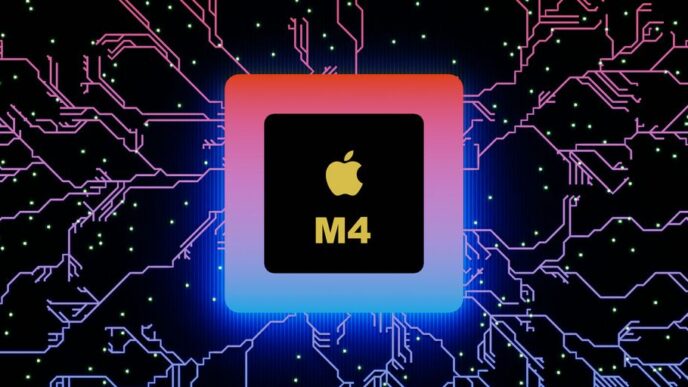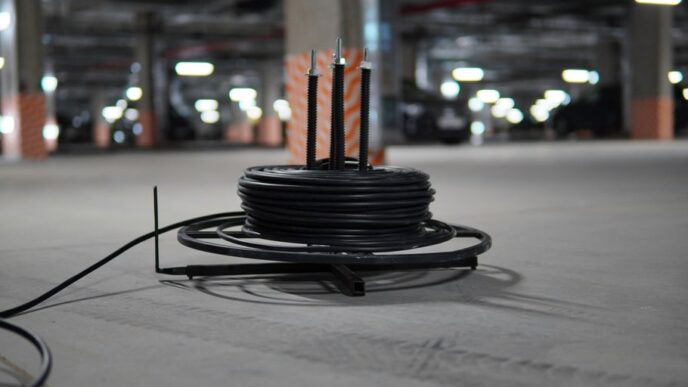Are you ready to take a step into the future? Spatial computing is here, and it’s changing the way we interact with technology. From augmented reality to virtual reality, this cutting-edge technology is transforming the way we work, play, and live our lives. But what exactly is spatial computing? How does it work? In this blog post, we’ll break down the basics of spatial computing and explore its exciting potential for revolutionizing our world.
Introduction to Spatial Computing
Digital twins, geo-fencing, and location-based analytics are all examples of spatial computing. But what exactly is spatial computing?
Spatial computing is the process of using computers to understand and manipulate data that has a geographic component to it. This can include everything from mapping and navigation to more complex applications like satellite imagery analysis and predicting traffic patterns.
There are a few key elements that make up spatial computing:
Data: All spatial computing starts with data. This data can come from a variety of sources, including GPS devices, sensors, satellite images, and more. This data must be accurate and up-to-date to get meaningful results from your computations.
Location: Once you have your data, you need to be able to assign it a location. This is usually done by matching up the data points with known latitude and longitude coordinates. With today’s technology, it’s also possible to assign locations based on street addresses or even images.
Analysis: Once your data is properly located, you can start to do some serious analysis. This is where the power of spatial computing comes into play. You can use algorithms to find trends, predict future behavior, and much more. And thanks to advances in machine learning, this analysis is only getting more sophisticated over time.
What is Spatial Computing?
The term “spatial computing” is still fairly new and emerging. It has been used in academic circles for a while but is only now starting to gain mainstream traction. So, what exactly is spatial computing?
In its simplest form, spatial computing is the use of computer technology to interact with and understand the physical world around us. This can be done in many ways, but the most common is through the use of sensors, AR/VR headsets, and drones.
One of the key aspects of spatial computing is that it allows users to interact with digital information in a way that feels natural and intuitive. For example, instead of looking at a screen and trying to interpret 2D data, you can put on an AR headset and see that data in front of you as if it were part of the real world. This makes it much easier to understand and work with.
Another advantage of spatial computing is that it opens up new possibilities for how we interact with computers. For example, instead of using a keyboard and mouse, you could use hand gestures or even your voice to control a computer. This would be especially useful for people who are unable to use traditional input methods due to disability or injury.
So far, we have mostly seen spatial computing used for entertainment and gaming purposes. However, there are many other potential applications for this technology. For example, it could be used for architectural design, medical training, or even military operations. The sky
How Does Spatial Computing Work?
To understand how spatial computing works, you need to first understand what it is. Spatial computing is a term that refers to the use of computers to create and interpret three-dimensional (3D) data. This data can be in the form of images, videos, or even real-world objects that have been digitized.
One of the most common examples of spatial computing is virtual reality (VR). When you put on a VR headset, you are transported into a digital world that feels very realistic. This is made possible by the fact that VR headsets track your head movements and adjust the image accordingly. This gives you the feeling of being in another place.
But spatial computing isn’t just about virtual reality. It can also be used to create augmented reality (AR) experiences. AR is when digital information is overlaid in the real world. A good example of this is the popular game Pokémon Go. When you play Pokémon Go, your phone’s camera shows you a view of the real world with Pokémon characters superimposed onto it.
So how does all this work? How are 3D images and objects created and interpreted by computers? There are quite a few different technologies involved, but we’ll just focus on two of the most important ones: computer vision and 3D printing.
Computer vision is what allows computers to “see” and interpret digital data. This technology has come a long way in recent years and
Applications of Spatial Computing
There are many potential applications for spatial computing, which is still a relatively new technology. One area where it shows promise is in urban planning and design. With the ability to create realistic 3D models of cityscapes, planners can test out different scenarios before making any changes to the real-world environment.
Another area where spatial computing can be useful is in architecture and construction. By being able to create detailed 3D models of buildings, architects can get a better sense of how their designs will look and function in the real world. This can save time and money by avoiding potential problems during the construction process.
Spatial computing can also have implications for education. With the ability to create interactive 3D environments, students could potentially learn in a more immersive and engaging way. For example, instead of simply learning about historical events from a textbook, they could explore virtual recreations of those events. This could make for a more memorable and effective learning experience.
These are just a few of the potential applications for spatial computing. As the technology continues to develop, we are likely to see even more innovative uses for it across a variety of industries.
Benefits of Spatial Computing
The potential benefits of spatial computing are far-reaching and wide-ranging. Perhaps the most obvious benefit is the ability to interact with digital content more naturally and intuitively. With spatial computing, you can move around digital objects, scale them, rotate them, and so on – just as you would with physical objects in the real world. This makes for a much more immersive and engaging experience that can be used for everything from education and entertainment to training and simulation.
Another big benefit of spatial computing is that it opens up new possibilities for collaboration. For example, multiple users can now interact with the same digital content at the same time, from different locations. This has huge implications for remote working, distance learning, and so on. Additionally, spatial computing can be used to create digital twins of physical spaces (e.g. factories, office buildings) which can then be used for planning and simulations purposes – again, with huge potential benefits for businesses and organizations.
Challenges/Limitations of Spatial Computing
When it comes to spatial computing, there are a few challenges and limitations to keep in mind. For one, this technology is still in its early stages, which means there aren’t a ton of applications or use cases just yet. Additionally, it can be expensive to set up a spatial computing system, as you need specialized hardware like sensors, projectors, and cameras. These systems require a lot of processing power and memory, which means they can be resource-intensive.
Conclusion
Spatial computing is a revolutionary technology that has the potential to revolutionize how we interact with the world around us. By creating an immersive environment, spatial computing can help people better understand their physical surroundings and make use of data in new ways. It also offers opportunities for collaboration, creativity, and innovation. With all these features, it’s easy to see why this form of technology is becoming increasingly popular and why more companies are investing in its development. We hope this article provided you with some insight into what spatial computing is and how it works so you can decide if it’s something worth exploring further!













